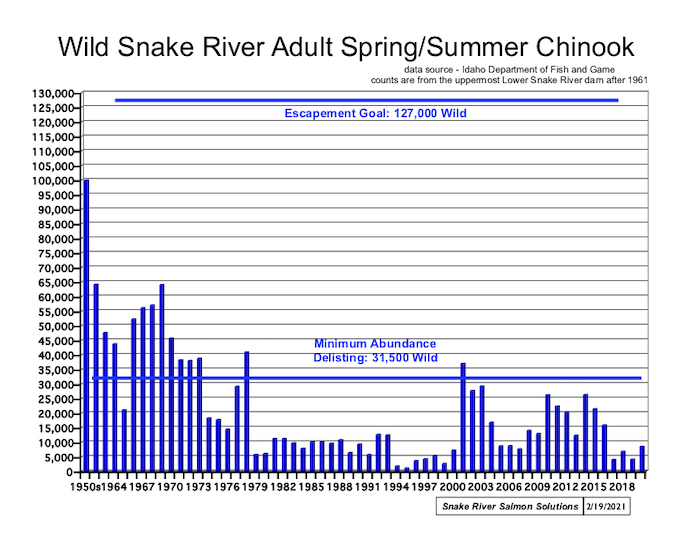forum
library
tutorial
contact

Fish Counts Tell the Story
by Marvin EntelLewiston Tribune, June 19, 2022
|
the film forum library tutorial contact |

|
Fish Counts Tell the Storyby Marvin EntelLewiston Tribune, June 19, 2022 |
If you take out the dams, you still are going to settle for the same number of return.
 If you follow the spring chinook fish counts as published in the Lewiston Tribune for the week of May 19-25, the conclusive evidence is dams and fish do coexist.
If you follow the spring chinook fish counts as published in the Lewiston Tribune for the week of May 19-25, the conclusive evidence is dams and fish do coexist.
Example: Ninty-six percent of the fish, exclusive of jacks, between McNary Dam made it into the Snake River system over Ice Harbor Dam. One-hundred-twenty-three percent of the fish crossing Ice Harbor went past Lower Granite Dam during that week.
How can anyone say the four lower Snake River dams deplete the fish runs based on the count?
When are you, who are against dams, going to realize the number of fish coming from the Pacific Ocean up the Columbia River is the only direct scientific correlation that can be shown to be an accurate prediction for the number of fish in the Columbia/ Snake river system?
The fish returns are a reflection of ocean conditions and survival of the smolts that were able to reach the ocean from the hatcheries and spawning areas of the Snake and Clearwater system.
There are millions of smolts that reach the ocean and, depending on all conditions, the number that return over Bonneville Dam and then up the Columbia to the Snake will average 30% to 40% of the returning fish.
If you take out the dams, you still are going to settle for the same number of return.
The numbers since counting began in 1938 have changed little as a percentage up the Snake. So why even consider removal of an economic driver the dams provide to this area?
learn more on topics covered in the film
see the video
read the script
learn the songs
discussion forum
